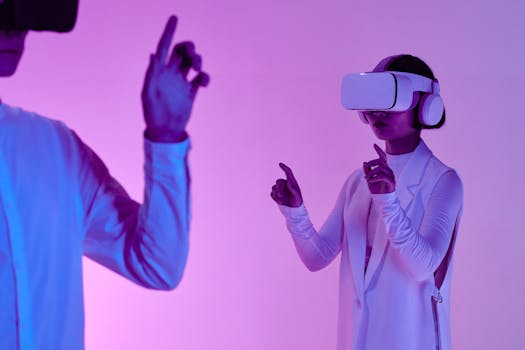Fashion in the Post-Human Era: Dressing AI and Cyborgs
The evolution of fashion has been an ongoing process, continuously changing and adapting to the world around us. From the early days of simple animal skins to the intricate designs we see on runways today, fashion has always been a defining aspect of our society. But as we progress into the digital age and technology becomes more integrated into our daily lives, the concept of fashion is taking on a whole new meaning in the post-human era. With the rise of artificial intelligence (AI) and cyborgs, what does fashion mean for these non-human entities? Let’s explore the fascinating world of fashion in the post-human era and how it is opening up a whole new realm of possibilities.
The Fusion of Fashion and Technology
The lines between fashion and technology have been blurring in recent years, with the introduction of wearables and smart fabrics. But with the emergence of AI and cyborgs, this fusion is becoming more pronounced. Fashion is no longer limited to just clothing; it is now a means of communication and expression for these advanced beings.
AI, with its ability to process and analyze data, is now able to create unique fashion designs based on consumer preferences and trends. This has led to the emergence of digital influencers, virtual models, and even entire fashion shows created by AI. With their perfect body proportions and endless wardrobe possibilities, these digital entities have the potential to revolutionize the fashion industry.
Cyborgs, on the other hand, are integrating fashion into their very being. With advanced prosthetics and augmented bodies, they have the ability to transform their physical appearance at will. Fashion is no longer just a tool for self-expression; it is now integrated into their identity and a means of enhancing their abilities.
Designing for the Post-Human Body
The traditional human body has always been the starting point for fashion design. But with the introduction of AI and cyborgs, designers must now consider a whole new set of physical capabilities and limitations. AI models, for example, do not have a physical body, so the concept of size and fit does not apply. This opens up a whole new world of design possibilities, where clothes can be created without the constraints of the human body.
On the other hand, designing for cyborgs presents a unique challenge. As they merge with technology, their bodies may have different shapes and proportions, requiring custom-made clothing. But with the advancements in 3D printing, designers are now able to create garments that fit seamlessly with these non-human bodies. This blurring of the lines between fashion and technology has resulted in a truly avant-garde approach to design.
The Ethics of Fashion in the Post-Human Era
As with any technological advancement, there are ethical concerns that come with the integration of fashion and AI or cyborgs. The concept of digital influencers, for example, raises questions about authenticity and the influence of data on consumer preferences. And as cyborgs continue to push the boundaries of what is considered the norm, the line between human and machine becomes blurred, begging the question of what is ethical in terms of fashion design for these entities.
But with these ethical concerns comes a new wave of creativity and diversity in the fashion industry. As we open up our minds to designing for non-human entities, we are also breaking away from traditional beauty standards and expanding the definition of fashion.
The Future of Fashion in the Post-Human Era
With the rapid advancements in technology, it’s hard to predict what the future of fashion in the post-human era will look like. We can only imagine the endless possibilities of fashion for AI and cyborgs, from self-cleaning fabrics to wearable technology that enhances their abilities. But one thing is for sure, fashion will continue to evolve and adapt to the ever-changing world around us.
In conclusion, fashion in the post-human era goes beyond just clothing; it is a form of self-expression, communication, and identity for AI and cyborgs. The fusion of fashion and technology has opened up a whole new realm of possibilities, challenging traditional design concepts and pushing the boundaries of creativity. And as we continue to integrate with technology, the definition of fashion will continue to evolve, making it an exciting and ever-changing industry for years to come.









